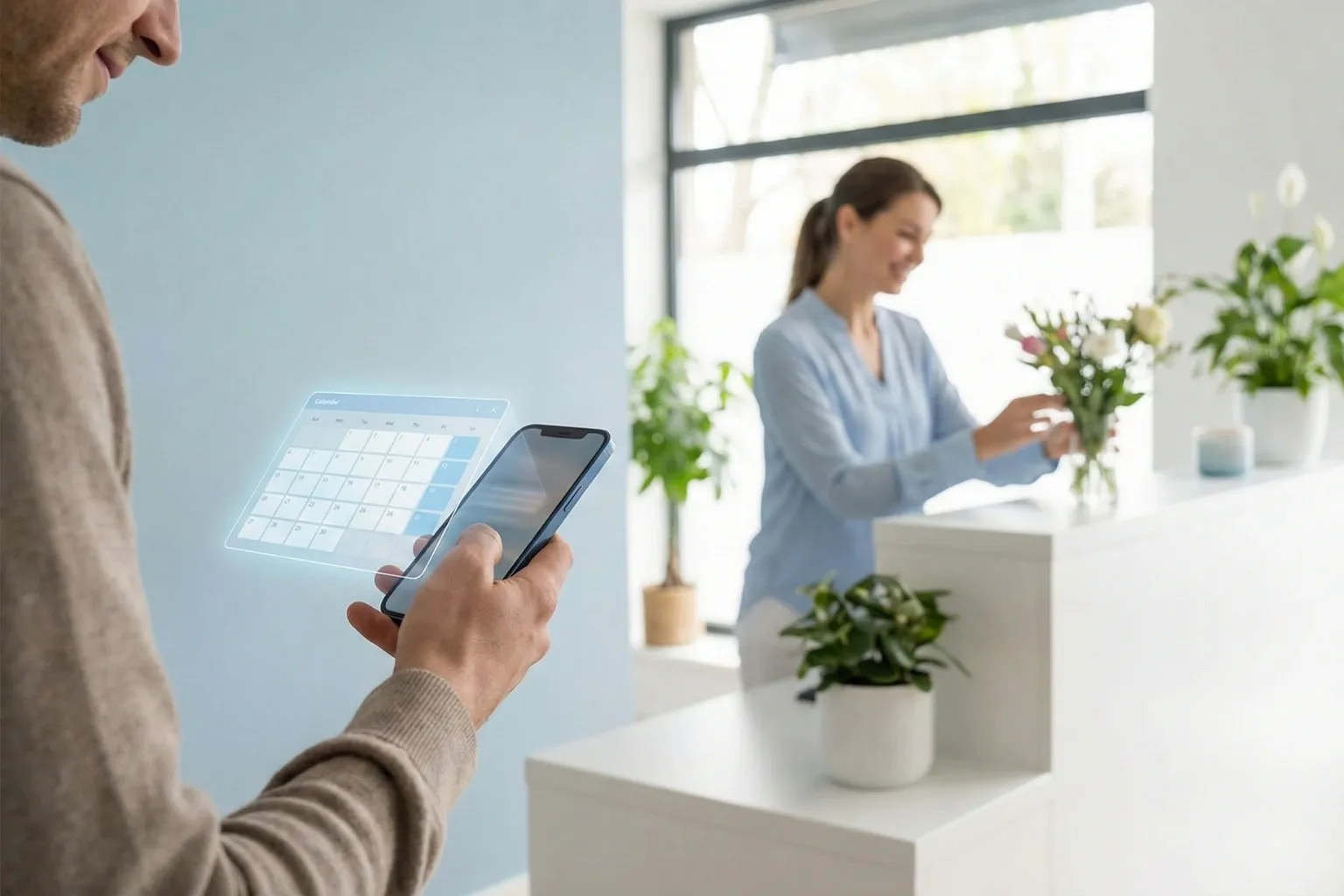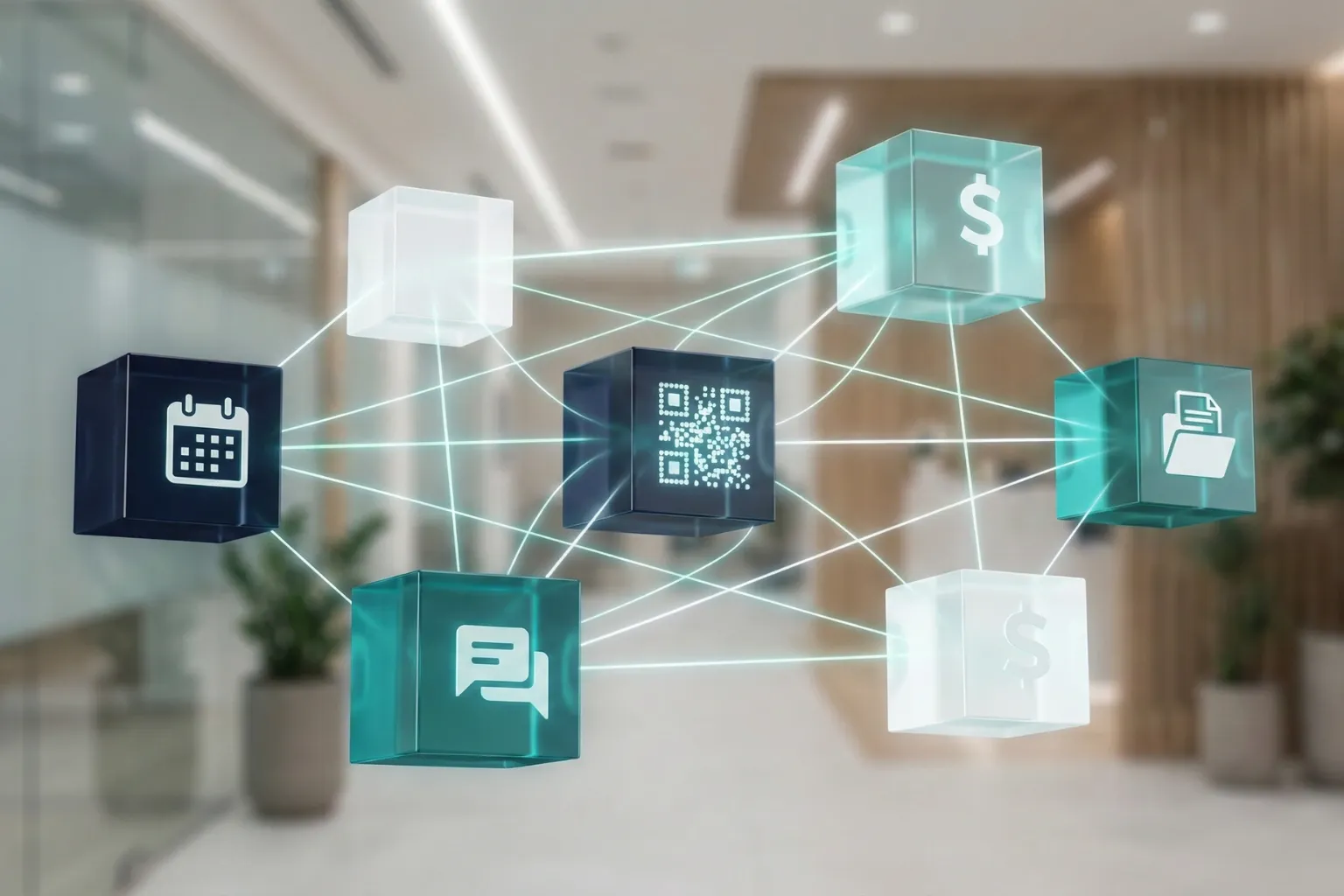
The routine of a clinic is naturally intense. Between appointments, procedures, administrative demands, and team management, appointment scheduling plays a strategic role. When this process is manual, repetitive, or decentralized, it tends to create bottlenecks such as issues in the schedule, patient no-shows, overlapping bookings, or low productivity at the front desk. Automating appointment scheduling, therefore, is not just a matter of modernity, but an operational necessity.
With the advancement of technology in healthcare management, there are tools capable of turning this critical point in the patient journey into a smooth, intelligent process aligned with the institution’s strategic goals. In this article, we will address how to automate appointment scheduling.
What Does It Mean to Automate Scheduling?
The automation of appointment scheduling consists of using digital systems and tools that allow patients to book, confirm, reschedule, or cancel appointments without direct human intervention. In addition, these tools allow the clinic itself to control and customize the schedule in a smarter way.
Automating does not mean turning care into something robotic, but rather delegating repetitive tasks to integrated systems, freeing up the team’s time for higher-value activities.

Before we move on, one important note: if you manage a healthcare clinic and need better scheduling organization, a secure electronic health record, and centralized financial processes, Ninsaúde Clinic can streamline your daily operations. Get in touch to learn more.

Direct Benefits of Scheduling Automation
Below are the main practical gains from adopting automation in appointment scheduling:
- Reduction in no-shows: with automatic reminders via SMS, e-mail, or WhatsApp, the patient remembers their appointment and has options to reschedule in advance.
- Increased front-desk productivity: less time on the phone and more focus on welcoming patients and internal organization.
- 24/7 availability: the patient can schedule at any time, even outside business hours.
- Better patient experience: the autonomy to book appointments brings convenience and strengthens the relationship with the clinic.
- Reduction in human error: duplicate bookings or inconsistencies decrease dramatically.
In addition to the immediate benefits in the daily routine, automation brings strategic gains. With the schedule centralized in a single system, the manager gains a clear view of the most in-demand time slots, the most sought-after professionals, and idle periods. This information supports decisions about expanding hours, hiring new professionals, or running specific campaigns for certain services.
Essential Elements for Effective Automation
Automating scheduling goes beyond simply offering an online form. For the process to be truly efficient and safe, some key elements must be considered:
1. Integrated, Intelligent Schedule
The clinical schedule should be connected to the electronic health record, health plan/insurance management, and operational routines. Systems such as Ninsaúde Clinic offer scheduling by specialty, by health plan, and with daily cap controls, ensuring an organized, predictable flow.
In practice, this means that when a new time slot is added, the system already identifies whether there is a conflict with another appointment, whether the limit for a given health plan has been exceeded, or whether there are planned blocks (meetings, surgeries, days off). This way, the front desk does not need to cross-check information in spreadsheets, paper agendas, or other systems, reducing communication gaps between departments.

2. Personalized Online Booking Links
Allowing the patient to access the schedule through a unique link is a direct way to empower them. It is possible to configure links for general clinic scheduling or individual links by professional.
3. Automatic Confirmation with Interactive Response
Integrated communication tools make it possible to send automatic messages with options to confirm, cancel, or reschedule. This significantly reduces no-shows and improves the use of the schedule.
4. Early Digital Check-in
Sending a check-in link via QR Code or SMS allows the patient to fill in their information before the appointment, which optimizes in-person service.
5. Integration with Payments and Packages
For clinics that offer session packages (such as physiotherapy, nutrition, psychology), automation must also consider recurrence and revenue sharing. In Ninsaúde Clinic, for example, it is possible to schedule several sessions at once, with built-in financial control.
Step by Step to Implement Scheduling Automation
Implementation should be gradual and planned, taking into account the clinic’s reality and the profile of its patients. Here is a recommended roadmap:
- Map the current scheduling flow: identify bottlenecks, rework, and manual steps.
- Choose a platform with comprehensive features: such as an integrated schedule, automatic confirmations, digital check-in, and reporting.
- Configure professionals and specialties: define days, time slots, average appointment length, and blocks.
- Customize communication channels: SMS, WhatsApp, and e-mail should use language consistent with the clinic’s identity.
- Train the front-desk team: even with automation, the human role remains essential for support and welcoming patients.
- Communicate with patients: use social media, e-mail marketing, and posters to present the new way of scheduling.
- Track indicators: analyze the number of no-shows, response time, occupancy rate, and feedback.
Whenever possible, set clear goals for these indicators. For example, reducing the no-show rate by 15% in six months or increasing online bookings by 20%. With defined goals, it becomes easier to engage the team and monitor the effectiveness of automation over time.

Care and Best Practices
Even though it is an automated process, scheduling still requires attention to aspects such as:
Automation does not eliminate the need for active management. On the contrary, it expands the manager’s ability to control operations, providing more data. It is important to periodically review scheduling flows, message texts, and time-slot settings to ensure everything remains aligned with the clinic’s strategy and patient profile.
- Information security: protecting patients’ sensitive data is mandatory, in line with data protection laws such as the LGPD and other applicable regulations.
- Customization by profile: not every patient is comfortable with digital tools. Keep a human support option available.
- Clear and objective messages: reminder language should be friendly and functional.
- Constant monitoring: automation requires periodic reviews for adjustments and improvements.
It is also essential to maintain an open communication channel for patient feedback. Asking in a simple way, via e-mail or message, whether the scheduling experience was easy and intuitive helps identify areas for improvement. Small adjustments, such as changing the sequence of questions in a form or simplifying the text of a reminder, can have a significant impact on the adoption of the automated system.
Ninsaúde Clinic Features That Enhance Automation
Ninsaúde Clinic is a robust example of a system that centralizes the patient journey with a focus on productivity. Among the most relevant features for scheduling automation are:
- Online scheduling with personalized links by professional;
- Automatic confirmation via WhatsApp, SMS, or e-mail;
- Cap control by health plan and specialty;
- Appointment packages with multiple bookings;
- Early check-in via QR Code;
- Personalized call screen at the front desk;
- Integration with financials, electronic health records, and CRM.

Automate to Grow: a One-Way Path
Automated scheduling is no longer a differentiator; it has become the standard for clinics that want to scale with quality. In addition to saving time and reducing errors, automation provides a smoother experience for both patients and staff. In practice, this translates into fewer phone calls, fewer scheduling conflicts, and greater predictability in appointments and revenue.
Implementing this change requires planning, reliable technology, and close attention to the user experience. Involving the team from the beginning, listening to the pain points of those on the front line, and gradually testing new workflows helps reduce internal resistance and ensures smoother adoption. In many cases, the team itself begins to suggest improvements after seeing the gains in day-to-day operations.
With systems such as Ninsaúde Clinic, it is possible to make this leap in a safe, integrated, and strategic way, connecting scheduling, health records, financials, and patient communication in a single environment.
Did you find this information helpful? Keep following our blog for more insights on management, medical marketing, and healthcare innovation.
Are you a healthcare professional and still not familiar with Ninsaúde Clinic? Discover how the platform can streamline your workflows and enhance the quality of patient care.

